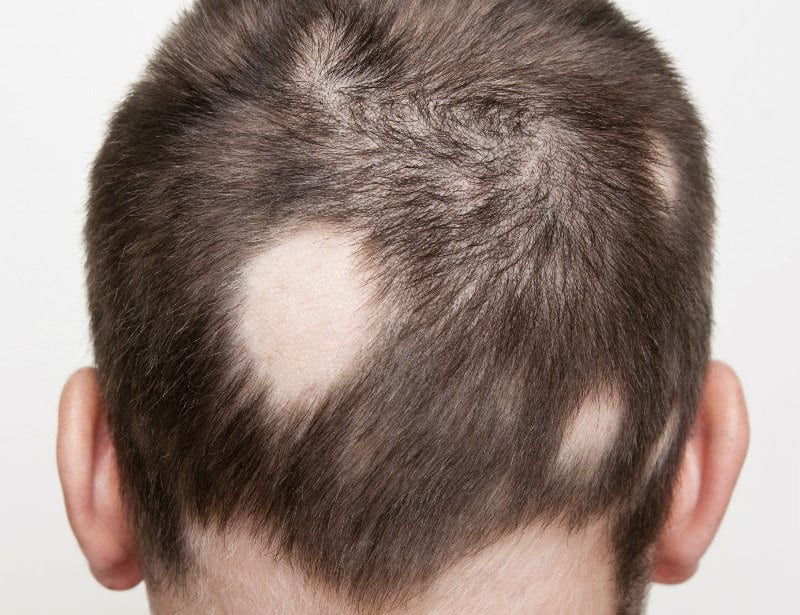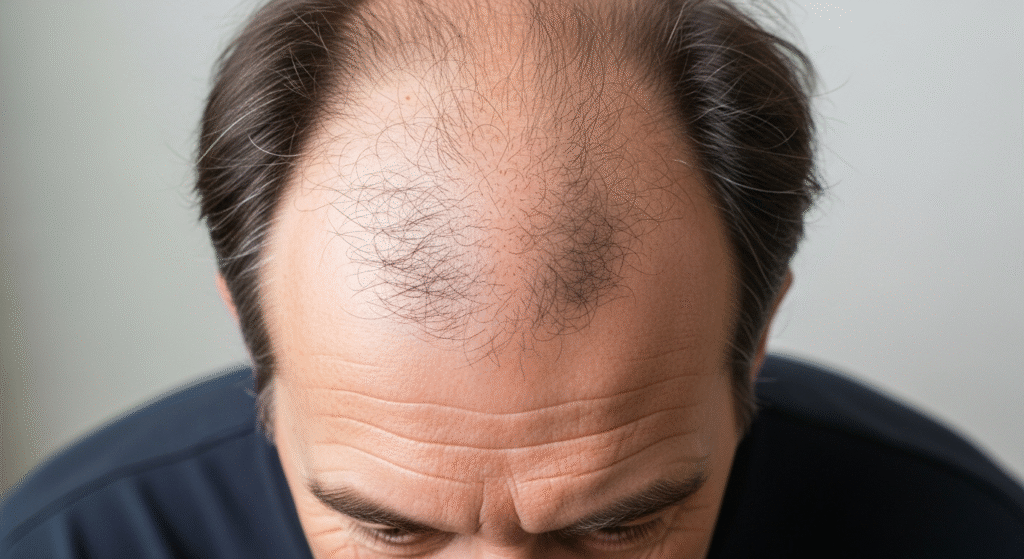Are you concerned that your blood pressure medication might be causing hair loss? If you’re taking lisinopril and have noticed increased shedding, you’re not alone. Can lisinopril cause hair loss? Yes—although rare, this side effect is possible.
In this article, you’ll discover why it happens, what symptoms to watch for, how long it may last, and what you can do about it. With expert insights, real timelines, and practical solutions, this guide helps you understand and manage lisinopril-related hair loss confidently and safely.
What Is Hair Loss and How Do ACE Inhibitors Affect It?
Types of Alopecia
Hair loss, medically known as alopecia, can occur in various forms. The most common drug-related types are:

- Telogen effluvium: Temporary hair shedding due to stress on the body or a change in medication.
- Anagen effluvium: Rapid hair loss during the growth phase, usually linked to chemotherapy.
Lisinopril is more commonly associated with telogen effluvium—a condition in which hairs enter the shedding phase prematurely.
How Do ACE Inhibitors Like Lisinopril Work?
Lisinopril belongs to a class of drugs called ACE inhibitors (Angiotensin-Converting Enzyme inhibitors). It works by relaxing blood vessels, which helps lower blood pressure. While effective, it can also alter hormonal balance and blood flow to the scalp, potentially disrupting the hair growth cycle in susceptible individuals.
How Common Is Hair Loss with Lisinopril?
Hair loss is a rare side effect of lisinopril, reported in less than 1% of patients. However, when it does occur, it can be distressing. Many patients do not immediately link their hair loss to the medication, delaying diagnosis and care.
Symptoms & Onset of Lisinopril-Related Hair Loss
Hair loss related to lisinopril may not be obvious at first. Here’s what to look for:
- Gradual thinning across the scalp
- Excess hair in brushes, shower drains, or on pillows
- No itching, redness, or inflammation (which suggests non-scarring hair loss)
When does it start?
Hair loss typically begins 2 to 3 months after starting lisinopril. This delayed onset aligns with the natural hair growth cycle.
Is it permanent?
In most cases, hair regrows within 3 to 6 months after stopping the medication or switching to an alternative.
Diagnosing & Confirming the Cause
Typical Diagnostic Steps
If you suspect lisinopril is causing your hair loss, your doctor may:
- Review your medical and medication history
- Conduct a physical exam of the scalp
- Ask about other symptoms like stress, illness, or nutritional deficiencies
Medical Tools & Assessments
To confirm the cause, your doctor might order:
- Thyroid function tests
- Ferritin and iron levels
- Hormonal panels
- A Naranjo probability scale score (a tool used to assess whether a drug caused an adverse reaction)
When to See a Specialist
If hair loss persists or worsens, consult a dermatologist or trichologist. They may perform a scalp biopsy or recommend additional lab tests to rule out other causes.
Treatment Options & Recovery Strategies
Should You Stop or Switch Lisinopril?
Do not stop lisinopril abruptly without speaking to your doctor. If hair loss is affecting your quality of life, your physician may recommend switching to another class of medication, such as an ARB (Angiotensin II Receptor Blocker) like losartan, which has a lower risk of hair-related side effects.
Adjunct Therapies
To support regrowth:
- Topical minoxidil: FDA-approved for stimulating hair growth
- Biotin and multivitamins: May support overall hair health
- Iron, zinc, and vitamin D: Should be corrected if deficient
Supportive Hair Care & Lifestyle Tips
- Use gentle, sulfate-free shampoos
- Avoid excessive heat styling and harsh treatments
- Manage stress with meditation, sleep, and diet
- Maintain a balanced, nutrient-rich diet
Recovery Timeline & Progress Tracking
| Timeline | What to Expect |
|---|---|
| 1–3 months | Increased hair shedding |
| 3–6 months | Shedding slows, new hair may appear |
| 6–12 months | Noticeable regrowth and thickening |
Pro tip: Take monthly photos of your scalp from the same angle and lighting to monitor changes over time.
Pakistani Specialists & Clinics
If you’re in Pakistan and struggling with medication-related hair loss, consult experienced trichologists or dermatologists such as Dr. Rana Irfan in Islamabad.

Medical References
- National Library of Medicine: Drug-induced telogen effluvium
- American Heart Association: Side effects of ACE inhibitors
- Clinical dermatology journals
When to Contact a Professional
You should seek medical help if:
- Hair loss worsens or becomes patchy
- You experience scalp irritation or pain
- You’re unsure whether your medication is the cause
Start with your primary care physician, then consult a dermatologist or cardiologist if needed.
FAQs
1. When does hair thinning start after lisinopril?
Usually within 2–3 months of starting treatment.
2. Can lisinopril cause complete baldness?
No, it typically causes diffuse thinning, not patchy or complete baldness.
3. Is switching to an ARB safe?
Yes, ARBs are often considered if hair loss is a concern—always discuss with your doctor.
4. Will hair regrow naturally?
Yes, in most cases, hair regrows within 3–6 months after discontinuation.
5. Are there preventative measures?
Maintaining a healthy diet, managing stress, and regular scalp care can help minimize shedding.
6. What if I’m taking other medications too?
Hair loss may be multifactorial. Share a full list of your medications with your doctor for a comprehensive review.
Final Thoughts
Concerned that lisinopril might be affecting your hair? Don’t guess—get answers. Book a personalized consultation with Dr. Rana Irfan in Islamabad to explore expert guidance, diagnosis, and holistic solutions for hair loss.
While lisinopril can cause hair loss, it’s an uncommon and usually temporary side effect. Understanding the signs, timeline, and available treatments can make a big difference in managing your hair health. With medical support and the right care, recovery is very likely.
